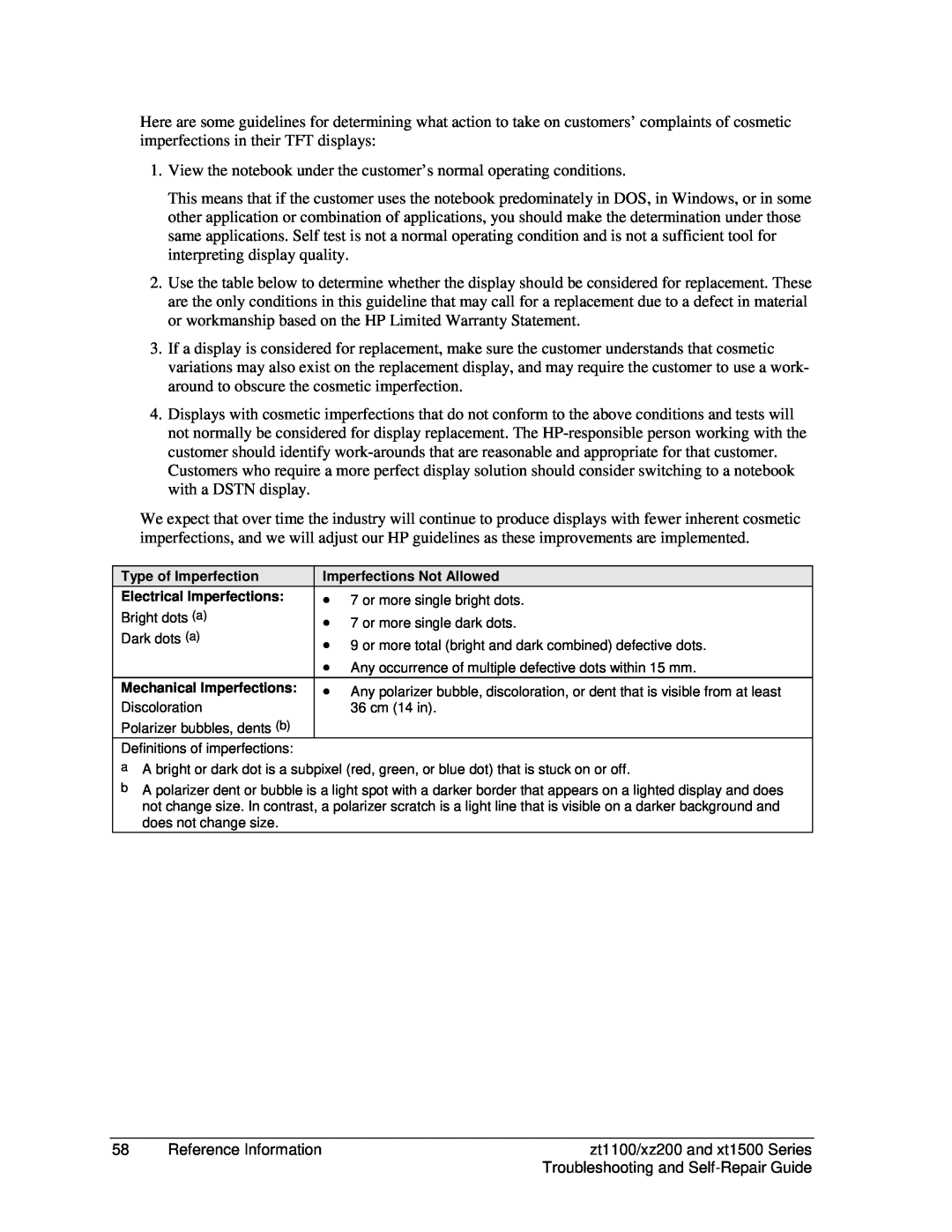
Here are some guidelines for determining what action to take on customers’ complaints of cosmetic imperfections in their TFT displays:
1.View the notebook under the customer’s normal operating conditions.
This means that if the customer uses the notebook predominately in DOS, in Windows, or in some other application or combination of applications, you should make the determination under those same applications. Self test is not a normal operating condition and is not a sufficient tool for interpreting display quality.
2.Use the table below to determine whether the display should be considered for replacement. These are the only conditions in this guideline that may call for a replacement due to a defect in material or workmanship based on the HP Limited Warranty Statement.
3.If a display is considered for replacement, make sure the customer understands that cosmetic variations may also exist on the replacement display, and may require the customer to use a work- around to obscure the cosmetic imperfection.
4.Displays with cosmetic imperfections that do not conform to the above conditions and tests will not normally be considered for display replacement. The
We expect that over time the industry will continue to produce displays with fewer inherent cosmetic imperfections, and we will adjust our HP guidelines as these improvements are implemented.
Type of Imperfection
Electrical Imperfections:
Bright dots (a)
Dark dots (a)
Mechanical Imperfections:
Discoloration
Polarizer bubbles, dents (b)
Definitions of imperfections:
Imperfections Not Allowed
•7 or more single bright dots.
•7 or more single dark dots.
•9 or more total (bright and dark combined) defective dots.
•Any occurrence of multiple defective dots within 15 mm.
•Any polarizer bubble, discoloration, or dent that is visible from at least 36 cm (14 in).
aA bright or dark dot is a subpixel (red, green, or blue dot) that is stuck on or off.
bA polarizer dent or bubble is a light spot with a darker border that appears on a lighted display and does not change size. In contrast, a polarizer scratch is a light line that is visible on a darker background and does not change size.
58 | Reference Information | zt1100/xz200 and xt1500 Series |
|
| Troubleshooting and |
